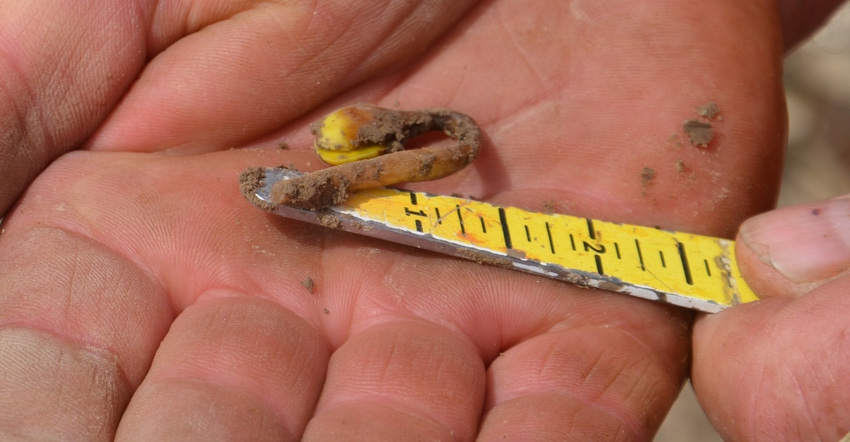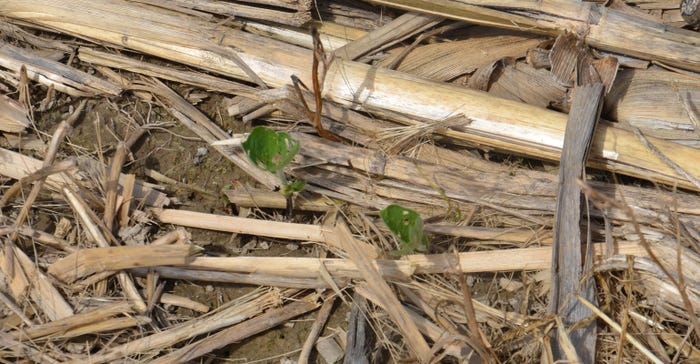
You planted soybeans several days ago. Driving by the field, you see signs that some plants are emerging. But when you drive by the same field a few days later, it doesn’t look any greener than it did before. It’s time to walk, scout and dig.
Steve Gauck is a believer in scouting fields to make observations, look for problems and see what he can learn. He carries a copy of the Purdue University Corn & Soybean Field Guide in his back pocket. Gauck, a regional manager for Beck’s, farms near Greensburg, Ind. Beck’s sponsors Soybean Watch ’22.
Related: Diagnose early-season stand issues in soybeans
Gauck visits the Soybean Watch field regularly, but he also walks many other fields across a wide geographic area throughout the season.
The opening scenario describes a field other than the Soybean Watch field. It could be anyone’s field. Here’s what happened to it in 2021.
Slug invasion
The field wasn’t getting any greener to the eye for two reasons. First, few, if any, additional soybeans emerged. Slugs fed on germinating seeds and on young seedlings, even before they emerged. Second, some of the seedlings that had emerged succumbed to slug damage and died.
“We don’t see slugs every year, and they usually are associated with cooler, wetter weather,” Gauck says. “However, over the past several years, we have found them alive and working in the Soybean Watch field as late as early July. By that point, they’re no longer a threat to large plants, but it indicates just how long they can hang around if it stays somewhat on the cool and wet side — especially if there is residue for them to hide in during the day.”
Some believe slugs are more of an issue in no-till fields, especially with cover crops. While Gauck acknowledges that conditions favorable for slugs may develop in those fields, fields without cover crops and even tilled fields aren’t immune from the pest, especially if weather conditions favor slugs and an outbreak occurs in an area.

The primary recourse if slugs damage stands bad enough, as in the scenario leading off this story, is replanting, Gauck says. There is no economical treatment on a whole-field basis today.
Replanting doesn’t guarantee success the second time around, Gauck notes. If conditions still favor slugs, they can attack replanted beans, too. The best hope is that weather conditions improve enough to discourage intense feeding by slugs when the replanted crop germinates and emerges, he says.
The field in this scenario was replanted because there were long gaps where no plants emerged, or survived if they did emerge. In this case, the second planting was successful, and the farmer obtained a good stand in most areas of the field.
About the Author(s)
You May Also Like




